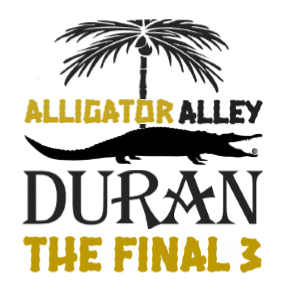Duran Golf Club
A unique course with gently undulating terrain
Duran Golf Club of Viera opened for business in summer 2005. The course is built on what was once a thriving cattle ranch and sod farm belonging to A. Duda & Sons Inc. — land that has been in the Duda family for five generations.
On that land, we have created a unique course with gently undulating terrain. More than a million cubic yards of earth were moved and shaped to create a course with links characteristics, including rolling terrain and mounded greens. Some 15 ponds and lakes were created that add beauty and drama to almost every hole on the course. Our landscaping has a natural feeling, featuring many native grasses from the area. Because of the former agricultural uses on the property, only one tree was standing here at the time that the building of the course began.
So to give character and definition to the site, we imported several thousand native palms, oaks and cypresses to the golf course. Even with the addition of these beautiful trees, the fairways have a very open feeling, allowing players to swing freely off the tee.
Any golf course can say that it is unique or plays to every skill level, but Duran Golf Club has definitely set itself apart in its ability to appeal to the very talented golfer, as well as the shorter hitters or those still developing their game.
“Duran is very playable for golfers of all abilities,” says General Manager David Tomczak. “The course was designed with minimal but strategic bunkering, allowing the average golfer to play without encountering a great deal of trouble.”
Players at Duran are always amazed at the loving care and attention we give to our greens that putt fast and true. You’ll also love the quality of our tees, fairways and roughs.
Our course begins with a forgiving and long par-5 that plays to 571 yards from the onyx tees and 426 from the ruby tees. Architect Chip Powell named it “Long Start,” but most players find it makes for a forgiving beginning to their round. On the tee boxes for the par-4 No. 2 (458 yards from the onyx and 339 from the ruby), you’re flanked on both sides by water, but these ponds should not be an issue on this dogleg right.
“The architect named this hole ‘The Coffin,'” says Tomczak. “That’s because of the very long and deep bunker next to the green. Players are advised to steer clear of this hazard if they wish to post a good score on this hole.”
No. 3, nicknamed “Lone Palm,” a par-4 that measures 339 yards from the onyx tees and 257 from the ruby, is where you’ll find the only tree that was standing here when the course was first built.
“This tree stands guard on a small peninsula that jets out into the lake and warns golfers, ‘Challenge me and you challenge the water,'” says Tomczak.
Our 7th hole is a par-3 called the “Punch Bowl.” It’s fairly long — 200 yards from the onyx tees and 152 from the ruby. The hole gets its name from the 8,000 square-foot green with bowl shape along the entire back of the green.
“If you hit the back half of the green, your ball will funnel back toward the pin,” Tomczak says.
The dogleg right par-4 No. 8 (447 yards from the onyx and 333 from the ruby) is called “Beachless” because it has no bunkers to catch your ball.
“You do have to carry your ball over water from the Onyx tees,” says Tomczak. “However, there are no forced carries from the forward tees. Golfers are cautioned not to try to bite off much of this dogleg, especially on this hole. The fairway is one of the widest on the course, and it is not worth the risk.”
One of the more interesting holes on the back side is No. 11, a par-5 nicknamed “False Front,” that measures 531 yards from the onyx and 408 from the ruby.
“What can be challenging here on this fairly straight hole are the greens complex and the bunkers surrounding the elevated green,” says Tomczak. “The front quarter of the green drops off like a shelf. If you hit the front of the green with backspin on it, your ball will roll off. This hole requires some planning to hit the right place on the green without adding any extra strokes to your score.”
Our 15th hole, a par-5 measuring 549 yards from the onyx and 440 from the ruby, is bordered on the right by a lake.
“Longer players can go for the green in two,” says Tomczak. “But if you go for it and don’t hit a perfect shot, you could pay the penalty.”
No. 17, a long par-3 (235 yards from the onyx and 163 from the ruby) is nicknamed “Biarritz.” A biarritz is a French name for a green that has a deep dip in the middle, usually running from side to side. This long, narrow green does indeed have a gully that will funnel balls to the center, which can be a good thing if the pin is in the right position.
Tomczak says that the 18th is the signature hole at Duran. This long, sweeping dogleg left par-4 measures 460 yards from the onyx and 336 from the ruby. The picture-perfect fairway wraps itself in a smooth crescent around a large lake making for a long and challenging finale to your round.
“One of the challenges here is a series of bunkers on the right side of the fairway that makes the fairway look like a very narrow target from the back tees,” he says. “The angle doesn’t give you a very good look at the hole, and it tends to make golfers question their strategy.”
You are often advised of the alligators that lurk near Florida waters. So goes the final 3 holes at Duran Golf Club. In the short time Duran has been open, many a golfer has had a round go South on these final 3 holes. Is it the fear of the gator, or the warm coastal winds that always seem to greet you near the end of a good round? Be warned. Stay clear of the water, and you might be able to salvage your round. Good luck.



